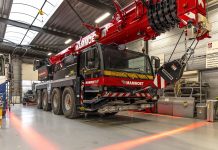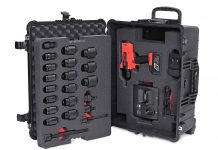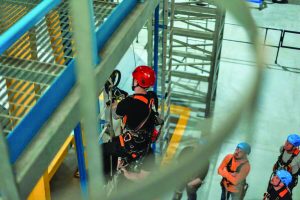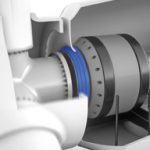In fastening, joint tightness is nearly always associated with the use of a calibrated torque wrench during installation. However, for any given fastener, the relationship between applied torque and resulting tension is anything but direct. This is no fault of the torque tool, but simply a shortcoming of the method itself; installation torque is not a measure of joint tension, it is purely a measurement of applied tightening effort. The primary reason for this is the influence of friction. When a fastener is tightened to a prescribed torque, this value has been calculated using a targeted clamp load and a nut (friction) factor. Variations of up to +/- 30% can arise at random with multiple fasteners from the same lot developing varying amounts of friction due to natural surface imperfections. Even within specification limits, variances in hardness and/or material properties can also impact accuracy.
These same errors within the torque-tension relationship also exist when verifying or maintaining bolt tightness. In addition, the process takes a lot of time and may result in little to no gain in joint integrity. As an example, say your coffee cup has been sitting for some time after being filled and you don’t want to drink cold coffee. You do not check the temperature first, but rather, you warm it in the microwave for 30 seconds.  Without first checking the temperature how do we know if the coffee will be too hot, or just right? Perhaps it did not need to be heated at all. This may sound elementary, and yet it is exactly what we are doing when we check a joint for tightness with a torque wrench: the tightening process is repeated to ensure that the same tension achieved at installation is maintained. Is the time spent re-tightening actually doing something useful? Using this re-torque method, do we really know if a bolt is loose? Rather we assume they all could be loose and tighten indiscriminately. However, there are means to verify tension in a bolt without putting a wrench on it.
Without first checking the temperature how do we know if the coffee will be too hot, or just right? Perhaps it did not need to be heated at all. This may sound elementary, and yet it is exactly what we are doing when we check a joint for tightness with a torque wrench: the tightening process is repeated to ensure that the same tension achieved at installation is maintained. Is the time spent re-tightening actually doing something useful? Using this re-torque method, do we really know if a bolt is loose? Rather we assume they all could be loose and tighten indiscriminately. However, there are means to verify tension in a bolt without putting a wrench on it.
Available methods for measuring bolt tension during and after installations include length measurement, direct tension indicators, and load-indicating fasteners. Of the three methods, load-indicating fasteners (LIFs) have proven to be the most beneficial for a number of reasons. LIFs are capable of showing real-time fastener load up to the material yield strength continuously throughout the life of the fastener. With a LIF, accurate and fast load readings are possible without special operator training or the need for keeping records or calculations to determine tightness. To verify load, an operator does not require any bolting experience, as this information is read directly from the fastener. The use of a detachable load-reading device may be required. Additional benefits can include automatic torque tool control and bolt load data logging capability. This means that bolted joints can be tightened and maintained more accurately, quickly, and with data to support that they are safe and properly loaded.
In fastening applications where joint tension is controlled, the only direct means to do so is with a LIF. All of the drawbacks of torque and tension tightening methods are no longer issues when standard fasteners are converted to, or replaced by, LIFs. With load indicating technology, every bolt is a calibrated instrument. More focus can be placed on achieving and maintaining proper bolt tension and less focus on procuring the tools and experience traditionally required for this task. This means a quicker, safer and more accurate wind power installation, more effective maintenance, and a longer life span. Also, newly developed technology for multiple bolt reading capabilities, for wind turbine applications, in both wired and wireless forms, are available. Numerous other industries have approved the use of LIFs to satisfy warranty and insurance requirements. Now there can be savings in time, labor, and other expenses in tower bolts, by using LIFs to satisfy the mandated inspection of the bolted joint.
For over 15 years, Valley Forge & Bolt Mfg. Co. in Phoenix, Arizona has dedicated extensive research and production to these innovative, patented fasteners and are the only manufacturer worldwide.





































